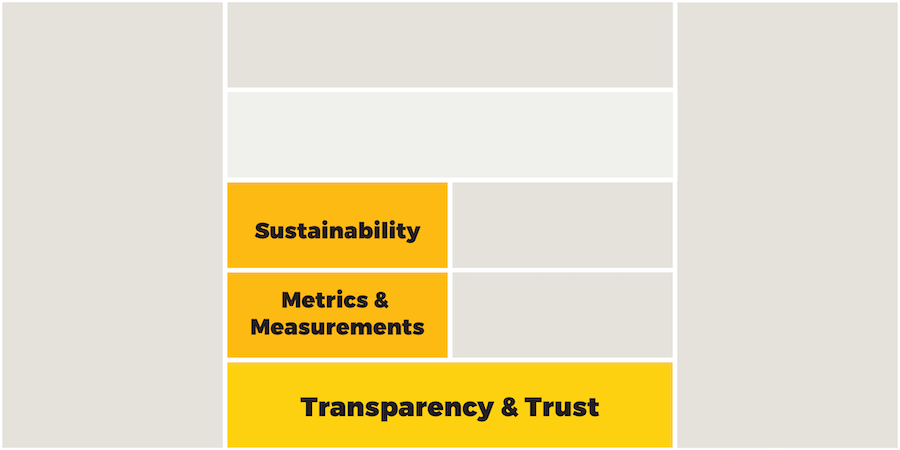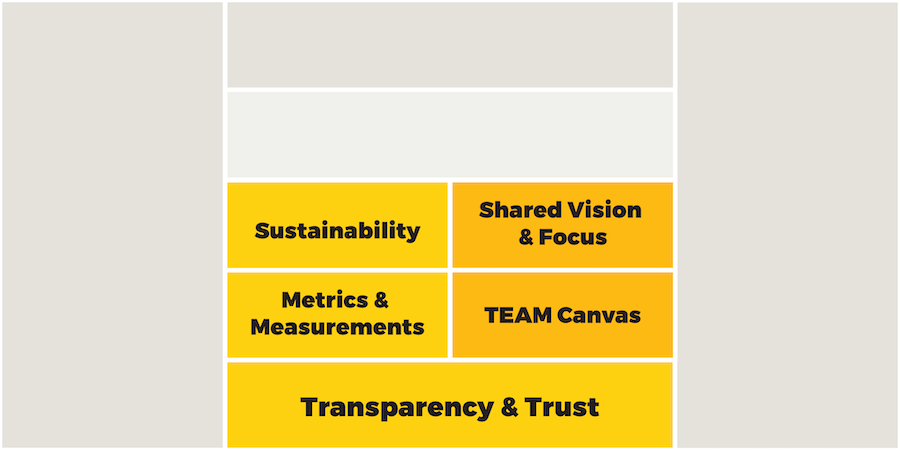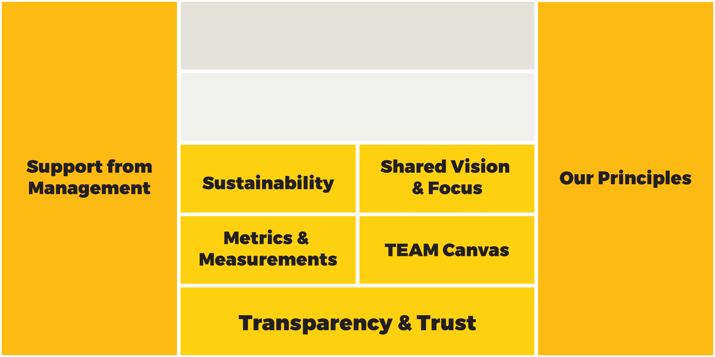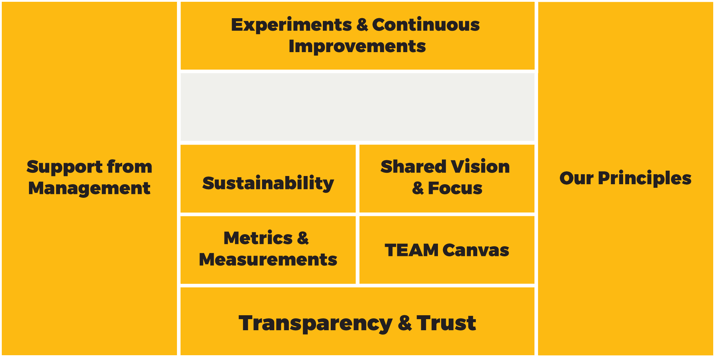Swapping out management for metrics

Our self-managed team in Malmö didn’t just magically start thriving on its own - it took a lot of work. This post is about sharing insights and knowledge on how we started, developed, and ended up successfully running a completely self-organized, manager-free office. We describe the challenges we faced, how we dealt with them, as well as the continuously evolving framework that emerged out of this process.
Starting a self-organized team
In April 2017, four employees opened a new branch office in Malmö. The premise of starting the new office was that the team should be self-managed - we didn’t want a boss involved in the daily work and wanted the mandate to take our own decisions. Management agreed to the experiment, giving only a single requirement: don’t lose too much money.
Little did we know how much effort it would take to keep the office self-managed, with a lot of hurdles to overcome during those first years. The few times we asked management how to tackle some issues, but they cunningly responded; “I don’t know, you decide.” After all, we had started out fresh, with neither a predetermined way of working nor any metrics to gauge how well we were doing. All we had was open communication and trust between our team members, and this became the foundation we built everything on top of.

Requirements
Our first and only requirement was the quite unspecific one of being asked not to lose too much money. While requirements would crystalize later on, e.g. “make 10% profit” and “don’t swear in Slack”, the initial vague goal was enough to inspire a question: how do we know if we’re making a profit?
Measuring sustainability
Our first challenge was assessing sustainability. To fulfill our vague requirement, we needed a way to know if we were profitable or not. We carefully plotted out some metrics, being aware of how dangerous poor metric choices can be. You improve what you measure, after all.
So we started measuring the following:
- How “good” are we at evenly sharing billable work?
- Are we limiting billable work to 80%? (A company value.)
- Are we making more money than we cost?

Shared focus and vision
We knew from experience that failing to voice personal goals and to agree on a team vision would have us all unknowingly walking in different directions. To prevent this, we decided to workshop it. With the help of a mutual friend, we started to use a team canvas, a tool to visualize our shared vision and current focus.
.jpg?width=800&name=teamcanvas.4%20(1).jpg)

Supporting pillars
So far, our efforts seemed to be working. We had a self-managed, well-performing team which was incredibly fun and rewarding to be in. We wanted to keep this going, and to that end, we needed to ensure two supporting pillars.
One pillar was to protect the team from external threats - the company itself losing faith in the project. This was accomplished by regular upward communication and staying on top of requirements.
The second pillar was to protect the team from internal struggles - our principles. Holding each other accountable and formalizing how we treat each other would be key in keeping the team strong.
Without either of these, our lovely little experiment would cease to exist.

Continuously improving
Now we’re already a few years into this story, the team has grown and the company even more so. We ran a lot of experiments during those first years - we still do, although the increased team size has added some inertia to our experimentation.
To keep up with our growing company, we’ve had to adopt some new ways of working to keep our supporting pillars intact. For instance:
- Spokespersons: We can’t all be everywhere at the same time, so we rotate volunteer spokespersons that participate in specific areas (e.g. sales, recruitment, marketing…) for a limited time.
- Personal Development Talks: Rather than delegating development talks to management, we’ve adopted a system of voluntary peer-to-peer talks focusing on personal development and goals.
- Salary and raises: We’ve adopted a transparent salary policy and hold collective negotiations with management for team-wide raises, where we divide the total sum amongst ourselves as we see fit.
Continuous experimentation and improvement is the roof in our house, so the team can adapt to changes in the weather, season, and organization.
The last piece
The observant among you have noticed the missing piece in our house. What do you do once your self-managed team has a sturdy foundation, powerful supports, and a sheltering roof? For us, it’s a big mix of continuous delivery, falafel, DevOps consultancy, beverages, workshops, board games, training, and campfires, but for you, it can be whatever you want.

A fun and rewarding experiment
It turns out management actually does some useful things, and as a self-managed team, you have to do those yourself. It takes effort and there’s no clear-cut way. It takes continuous experimentation, improvement, and adjustment just to keep things running. But where there’s a will, there’s a way, and we found traveling down that path to be incredibly fun and rewarding.
We've felt that growing is painful, and one thing we haven't yet discovered is how shrinking or swapping out people will go.
Then, what are the benefits of a self-organized team? In short, motivation and involvement. We've never cared so much about our team doing well as when we were part of running it, which means we put more effort into it, which in turn (hopefully) improves performance. We take on a lot of extra work, but we offload others. We're forced to communicate with others, so it's possible to argue that it forces you to build a cross-functional team and to break down silos. The process of owning your requirements forces you to crystalize them so that you really understand the reasons behind them. This in turn makes your goals and targets so much clearer.
Published:
Updated:

